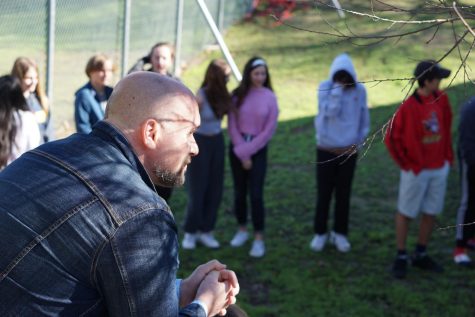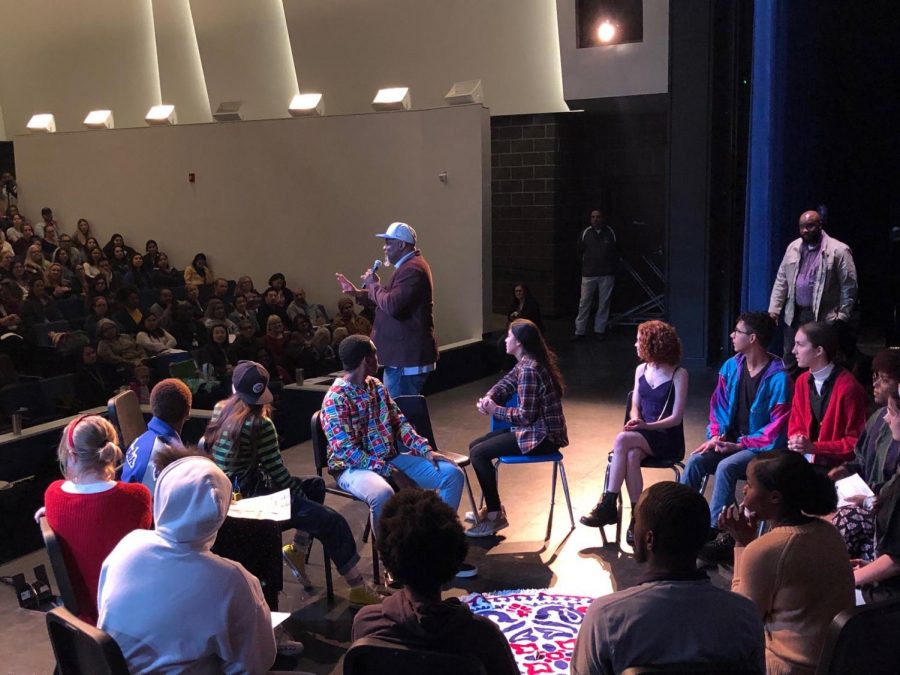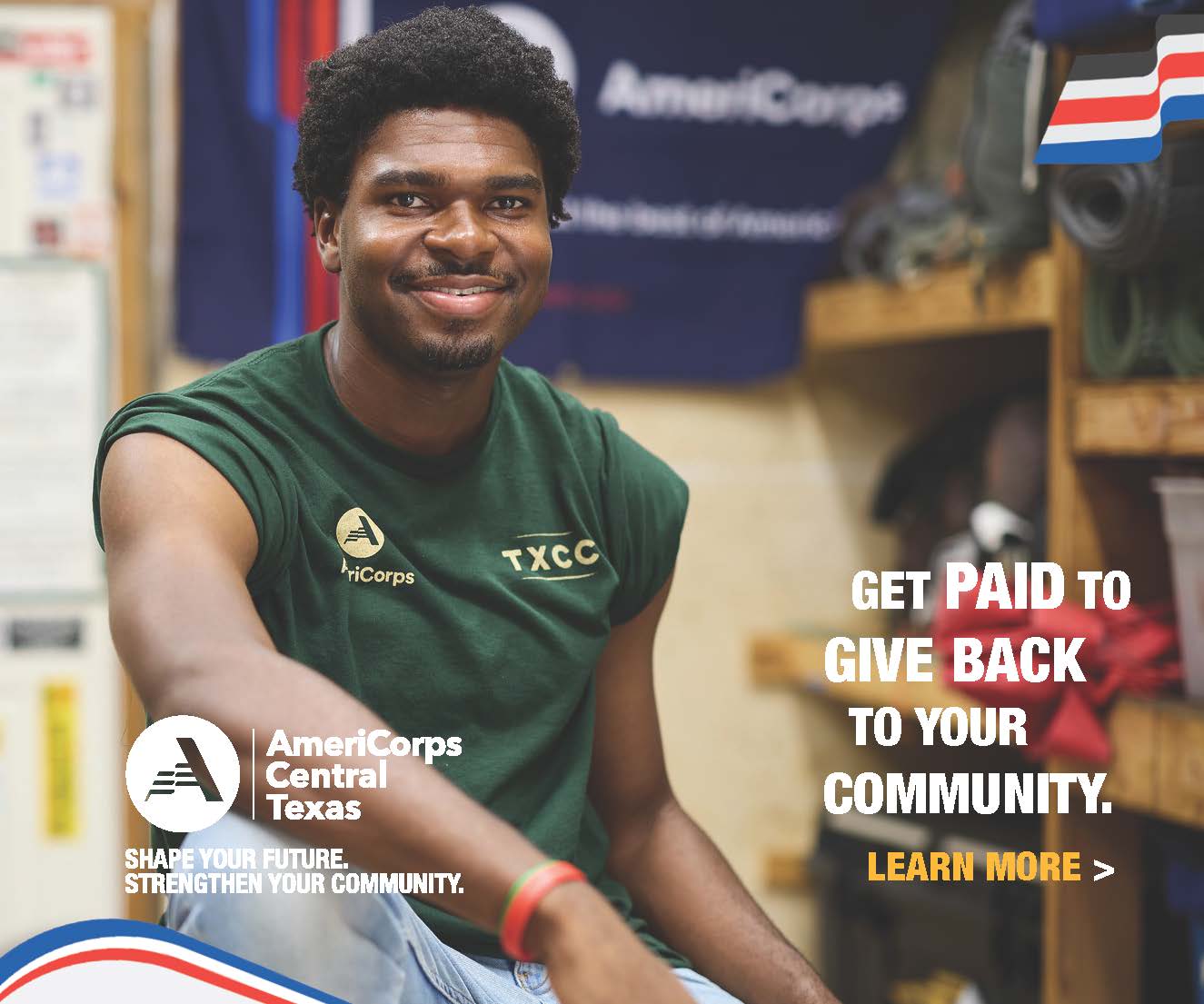Strengthening community at Mac
Hosack establishes campuswide restorative practice to bolster existing relationships, build new ones
Sherwynn Patton demonstrates a restorative practice circle to the McCallum vertical team during a teacher workday on Jan. 6. Photo by Larry Featherstone. Originally published on the McCallum High School Twitter feed.
February 22, 2020
Have you ever noticed that at school, students tend to retreat to the safety of their phones rather than socializing? Or that everyone sits with the same people at lunch? Or that teachers have to spend so long getting their kids to focus that they can’t get to the lesson?
Principal Brandi Hosack believes that a lack of personal relationships in the classroom perpetuates this cycle, and she has a possible solution. This year, she brought in an initiative meant to strengthen the community at McCallum: restorative practice.
Hosack previously implemented the practice when she was principal at Akins High School. It helped to reduce discipline by 50 percent and cut suspension rates by 40 percent, Hosack said.
“The black and white data is there, but the feeling of the school changed,” Hosack said. “That’s what’s important. It started to feel like a community.”
Originally adapted from a form of problem-solving in the prison system called restorative justice, this method strays from disciplinary norms in public school.

World geography teacher Robert Bucher observes his class’s SEL lesson led by sophomore Alysa Spiro. Photo by Dave Winter.
Hosack explained that participants in the discussion sit in a circle, so to emphasize equity, and calmly communicate in a constructive manner. The purpose is to get down to the very root of a problem and solve it systemically.
“I have my campus leadership team go through a protocol called the five whys,” Hosack said. “When you see something and it doesn’t look right, ask why. Then when you answer that question, ask why again and then when you answer that question, ask why again, so that you drill down to the root problem. And what I’m looking to disrupt is … institutional bias against any given group.”
Hosack is implementing restorative practice at McCallum through a student leadership program where student leaders were recommended by their teachers for their ability to demonstrate leadership qualities.
This group, which is comprised of 75 students, will continue to lead restorative practice meetings and work at implementing the practice campus-wide. Hosack plans to utilize the team in social-emotional learning and in professional development.
The student leaders have already met a number of times. Their first meeting took place on Dec. 12, and most of the time was spent getting acquainted with their new teammates and brainstorming ideas on how to foster positive relationships in the academic environment.
“It was really fun being able to meet new students and have deep conversations,” freshman Jayden Mason said. “I just think that it’s awesome that we get to have a voice.”
The largest-scale meeting the student leaders had was a workday with teachers and administrators from the vertical team that took place on Jan. 6. Hosack and the staff were impressed by the performance of the students.
“I think that Jan 6 was a pivotal day for this campus,” Hosack said. “[The teachers] were so impressed with our student leaders. I’m so impressed with our student leaders. I think that there were quite a few adults on our campus and in the vertical team that are like, ‘Our kids are simply amazing,’ and they are. And if you’ll just stop and listen to them for a second, they’ll show you that.”
Although cultivating personal relationships with teachers and classmates may seem daunting at first, Hosack believes it will boost efficiency and morale in the classroom. Building an empathetic environment will save time in the long run, Hosack says.
“If you take 10 minutes to build community with your classroom, you will save the 30 minutes that you waste trying to get them back in line and back on track and focusing,” Hosack said. “And so it is an investment in time in the beginning, and ongoing, but you reap the benefits tenfold.”
Besides improving student-teacher relationships, restorative practice is also meant to serve and strengthen the student community.
Junior Emily Arndt described how quickly she was able to bond with her fellow student leaders during their preliminary meetings.
“Even though there were 70 of us, I still feel a personal connection to these people, because some people were telling some really personal stories,” Arndt said. “Some things hit close to home, some of them, I couldn’t relate to at all, but I can understand the feelings. It was very impactful.”
Senior Connie Pierce appreciates the diversity of the student leadership team.
“It’s really nice because a lot of the people that are in it are not people I would see every day,” Pierce said. “So it’s like making new friends, but also seeing different perspectives from people who don’t necessarily think the way you think, so I think that’s really cool, and it helps us keep an open mind during the process.”
Although the road to restoration of the McCallum community is a challenging one, it is a road Principal Hosack is willing to take to reach equity. By beginning to problem-solve from the bottom up, Hosack is optimistic for McCallum’s future.
“Everybody has to feel like they belong here,” Hosack said. “Every single person, meaning every single student, every single adult, every single parent, has to feel like they have a place at the table.”
—with reporting from Maeve Walsh





Scarlet C • Feb 27, 2020 at 9:39 am
I thought this article was very interesting, enjoyable and well written. I also really like all of the pictures, especially with the colorful lighting.
Anna Nagle • Feb 26, 2020 at 11:14 am
This article is beautifully written. I’m really excited to see what sort of new developments and improvements the student leadership brings to the metaphorical table. Great syntax, photos, and quotes!
RonWolleben • Feb 25, 2020 at 10:29 pm
I love the article the student leadership team at their finest, and I only see them improving.
Theo • Feb 23, 2020 at 9:07 pm
Beautifully written article! The Student Leadership Team is only getting started.